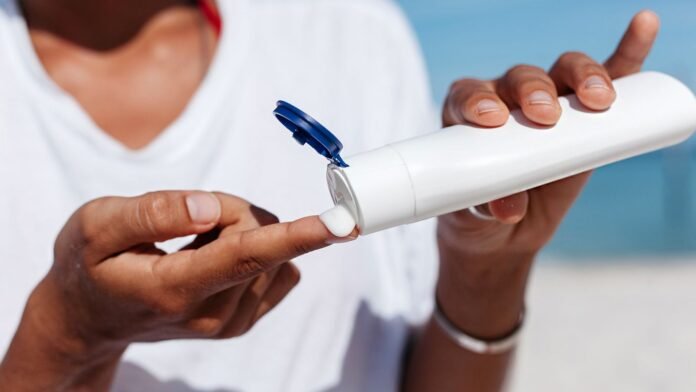Whipped sunscreen is gaining popularity in the skincare world. This new form of sunscreen offers a unique texture, different from traditional creams or lotions. Its airy, mousse-like consistency makes it more appealing and easier to apply. Many people find traditional sunscreens heavy or greasy, and whipped sunscreen provides a lighter alternative.
Dr. Sonali Kohli, a consultant dermatologist at Sir H.N. Reliance Foundation Hospital, notes that whipped sunscreen is especially beneficial for those with oily or acne-prone skin. Its lightweight nature doesn’t clog pores, reducing the risk of breakouts. This makes it a good option for daily use, even under makeup.
Experts emphasize that the type of sunscreen isn’t as important as regular and adequate application. “The key to effective sun protection is using enough product and reapplying it every two hours, or after swimming or sweating,” Dr. Kohli advises. This principle applies whether you’re using whipped sunscreen, lotions, or sprays.
Whipped sunscreen is also appealing because it tends to blend more easily into the skin. This can encourage more consistent use, as people are more likely to apply a product they find comfortable and enjoyable. The mousse-like texture can also make it easier to achieve even coverage, an important factor in ensuring comprehensive protection from UV rays.
However, Dr. Kohli cautions that whipped sunscreen, like all sun protection products, must contain broad-spectrum protection with an SPF of at least 30. This ensures coverage against both UVA and UVB rays, which can cause skin aging and increase the risk of skin cancer.
While whipped sunscreen offers a pleasant and lightweight alternative to traditional sunscreens, its effectiveness ultimately depends on proper application and reapplication. As the skincare industry continues to innovate, finding the right product for your skin type and lifestyle is key. Regardless of the formulation, consistent use of sunscreen is essential for maintaining healthy skin and protecting against harmful UV radiation.
Whipped sunscreen’s formulation often includes added benefits such as hydrating ingredients and antioxidants. These components can provide additional skin care benefits, like moisturizing dry skin and protecting against environmental damage. For individuals who are already incorporating skincare products with these ingredients into their routine, whipped sunscreen can serve as a multitasking product that simplifies their regimen.
Despite its advantages, whipped sunscreen may not be suitable for everyone. Those with very dry skin might find that they still need an additional moisturizer underneath, as the lightweight formula may not provide enough hydration on its own. It’s also crucial for consumers to check for potential allergens or irritants in the product’s ingredient list, as with any skincare item.
Another consideration is the packaging of whipped sunscreen, which often comes in pressurized cans or jars. While this packaging helps maintain the mousse-like texture, it can pose environmental concerns due to the materials used and the difficulty of recycling these containers. Eco-conscious consumers may want to consider these factors when choosing their sun protection products.
For people who are often outdoors or active, the convenience of whipped sunscreen can be a significant advantage. Its easy application can make it more likely for users to apply the necessary amount and to reapply as needed. However, it’s important to carry the product along for reapplication throughout the day, especially when spending extended periods in the sun.
Ultimately, the choice to incorporate whipped sunscreen into a skincare routine should be based on individual skin type, lifestyle, and personal preference. As the skincare industry continues to evolve, options like whipped sunscreen provide consumers with more ways to protect their skin while enjoying the sun. Regular use of any effective sunscreen, complemented by other sun protection measures such as wearing hats and seeking shade, remains the cornerstone of maintaining skin health and preventing sun-related damage.

